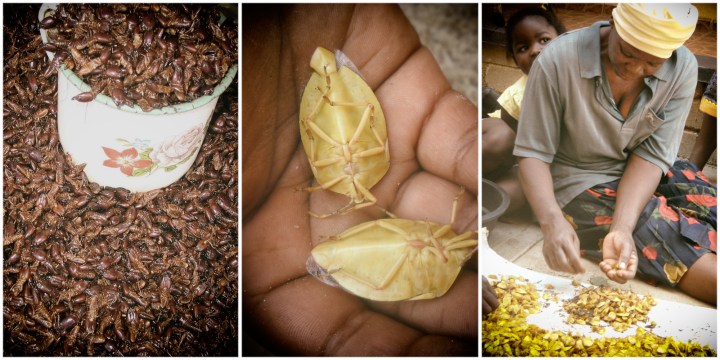CREEPY CRAWLY CRISIS
Insects are marching towards extinction — and why we should be mightily bugged

A study by researchers from Australia, Vietnam and China shows that the rates of decline in insect populations may lead to a staggering 40% of the world’s insect species going extinct over the next few decades.
Insects — the tiny creepers, crawlers and flyers that may be an annoyance to humans and seem a little useless — are among the most important players in ensuring the stability of our biodiversity and therefore the livelihood of humans.
However, their populations have over the years been showing a decline as the world rapidly develops, the climate crisis worsens and the increased demand for food forces farmers to be highly dependent on pesticides that are partly responsible for the drop in insect numbers.
A 2019 study by researchers from Australia, Vietnam and China showed that the rates of decline in insect populations may lead to a staggering 40% of the world’s insect species going extinct over the next few decades.
According to the study, moths and butterflies, bees, wasps, hornets, sawflies, ants and dung beetles are most affected by the threat of extinction. More aquatic insects, however, such as dragonflies, stoneflies, caddisflies and the mayfly have already lost significant numbers to their population group.
Beekeeper Simon Hartley told DM168 that driving through the Lowveld region about 20 years ago meant the car windscreen would be covered in insects.
“You drive through the Lowveld area now, you come out with a clean windscreen. And that was, to me, a really tangible indicator of the perceived impact that heavy commercialised farming has had on the insect population in general. To me, that was very telling and it was absolutely true. I’d been all the way through the different areas (in the Lowveld) and my windscreen was still clean; maybe one or two bugs on it,” said Hartley.
Declining insect populations
Dr Bronwyn Egan, from the University of Limpopo’s biodiversity department, told DM168 that while the numbers point to a decline in South Africa’s insect population, it was more complex than that since there were niche areas where the insects were fine.
“It does in general look like they’re declining and that is a massive problem,” Egan said. “Because insects are such a massive group of animals, and we have such a dilemma in the way we look at them: sometimes we look at them in terms of just pests, so we don’t really care what happens to them as long as they’re not around. And then we do understand that they are pollinators and they’re part of a food chain or greater food chain that we’re also dependent on.”
Insects play a huge role in our ecosystem as they transport nutrients by pollinating about 80% of trees and bushes, pollinate plants and also protect them from other seed predators by their mere presence in large numbers. Insects also disperse seeds and maintain soil structure and fertility, all while controlling populations of other organisms and being a food source rich in protein and good fats.
A declining insect population means a destabilisation of the ecosystem and its already fragile resilience as a result of the climate crisis. This can also threaten food security for many communities that look to these insects as a food source.
According to Egan, the story of the decline of insects is complex, but: “The main reasons we believe that insects are declining are increased pesticide use and less availability of their habitat because of (increased) development; that could be housing, it could be roads, it could be mining — just habitat destruction in general. It could also be converting the land into forestry or orchards where pesticides are being used.”
Artificially farmed insects
As insect populations decline and face threats of extinction, the growing interest in diversifying food sources and nutrients has seen a rise in edible insects. Farmers have turned to farming insects that can either be harvested for pet food and human consumption, as well as other uses such as textiles (silkworms).
While farming insects does increase their populations, it doesn’t entirely contribute to the bigger-picture issues such as biodiversity imbalance, because the insects are well contained and restricted from going into the ecosystem and performing their function before serving their purpose, Joanne Techow, the founder and director of Ensekta (edible insect food producer) and a former insect farmer, told DM168.
“There are farms that cultivate them to increase these (declining insect) numbers, but the problem is that it’s a very small percentage of the insect [species] that we have; it doesn’t help the butterflies, locusts, insects, etc,” said Techow, who is also a University of the Witwatersrand honours graduate in zoology.
According to Techow, farmed insects are usually easily cultivated in high numbers, including soldier flies, crickets and mealworms (beetles) which are edible and often used to produce pet food. Other farmed insects include fruit flies, ants, cockroaches (for animal feed), red wiggler worms (worm bins help vegetable growth), silkworms and ladybugs.

Mopane worms have long grown in abundance around the country and with increased demand comes greater harvesting which poses a threat to the insect, its biodiversity and the larger ecosystem. Above, the worms have been cleaned and sorted to be enjoyed as a stew. (Photo: Dr Catherine Dzerefos)
Artificial farming helps break down the stigma of insects as pests but also proves their economic value, with Cornell University in the US finding that insects contributed more than $57-billion a year to the economy more than a decade ago. This was through wildlife feed, pest control, crop pollination and cleaning up grazing land, which saves ranchers a huge chunk financially.
“Artificial insects are bred under strict conditions; we don’t like escapees because we can create a pest situation if we have an escapee. So, they’re very well monitored and we have a strict ‘keep other insects out policy’ because other insects can bring in bacteria and viruses that can infect a whole colony and wipe everything out. So, we have a very strict ‘no in, no out’ policy as with other insect farmers,” Techow said.
Edible insect harvesting and food source alternatives
A lack of regulation around farming and harvesting insects also contributes to the decline of the insect population. As more people turn to alternative foods in the face of growing food insecurity, many are relying on the resources around them, such as edible insects.
Zwannda Nethanani, a PhD candidate in genetics at Stellenbosch University, told DM168 that insects such as the mopane worm have been declining over the past five years due to unsustainable harvesting.
“People cut off branches of the trees or the host plants while trying to collect the caterpillars (mopane worm). Which means if the population has to be established next year, or the next seasons, they won’t have enough food to eat. And then the second thing is collecting more than they should because at least maybe if we can collect about 70% to 80% of the population, we’ll leave the remaining 20% to repopulate in the next season,” Nethanani said.
Nethanani said the lack of education around unsustainable mopane harvesting was a problem, but that it went further, to the farmers who were allowing the harvesters to enter their farms for a fee.
Visit Daily Maverick’s home page for more news, analysis and investigations
Nethanani said that, in research towards her master’s degree, she had grappled with how to conserve the mopane worm in light of unsustainable harvesting. “I don’t know how, but [harvesters and farmers] should be educated. [They] can only conserve what they understand.” The latter is particularly true as southern Africa does not have a comprehensive database of edible insect species, Egan pointed out.
Martin Boima, CEO and founder of Martin’s Nature Care, started harvesting termites at the age of six with his elders in Tzaneen, Limpopo. His family enjoyed the insects in a stew with pap, he told DM168
As a young boy he hunted for termites close to his backyard, but owing to increased rural development Boima said he now has to go further into the bush to find them.
“They are now harder to find and I can’t find them near my place. Where I am staying, there weren’t many houses around my place, so since there are now more houses, people are destroying [termites] because most people say they are destroying their property and eating their houses. At my place, I have them and don’t have a problem with them,” the 25-year-old said. He said residents have also started using pesticides to get rid of termites.
Boima said he had been trying to protect the termites and create a safe space for them, but acknowledged he could not fulfil the roles the environment and larger ecosystem play for the termites.
The termite harvester has since expanded the use of termites beyond stew, to biscuits, scones and termite bars.
“I’ve taken my product (termite bars) to the South African Bureau of Standards and the result came back with a 21.78% protein content for nutritional analysis, very high in energy and fibre. So, if we try to protect those insects, we can have natural protein, energy and fibre. So, let’s try to protect them, not destroy them,” said Boima. DM/OBP



















 Become an Insider
Become an Insider
Comments - Please login in order to comment.